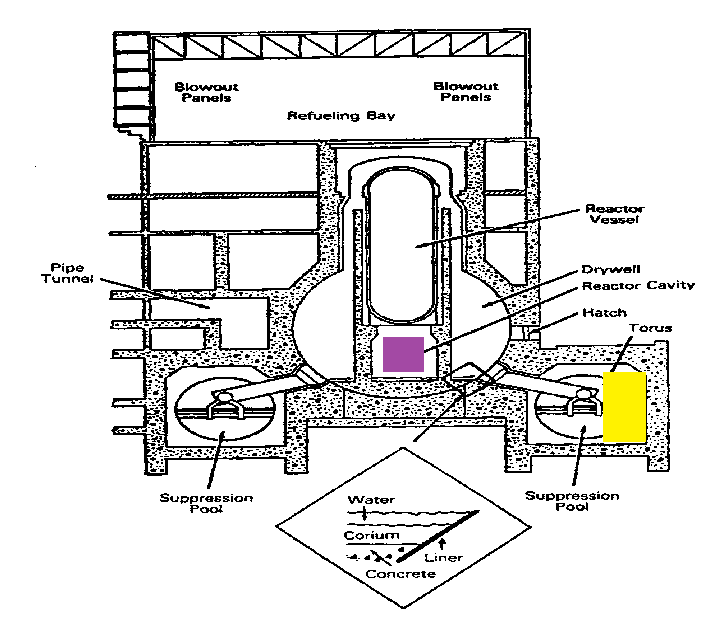Pilgrim Worker Claims He Was Poisoned by Radiation
By Christine Legere, The Provincetown Independent
Published on Nov 16, 2024
PLYMOUTH — A 41-year-old worker assigned to the decommissioning of the Pilgrim Nuclear Power Station for several months in 2021 claims he was poisoned by radiation and that Holtec Pilgrim, the plant’s owner, misled workers about safety. He has sued the company for injuries caused by “the release of radioactive, hazardous, and toxic substances.”
Adam Snyder, a resident of Ohio, was employed by William Industrial Services, a company subcontracted by Holtec to work at a handful of nuclear plants the company is decommissioning. According to court documents, Snyder’s job was to remove fuel rods during the decommissioning process.
In an amended complaint filed on Nov. 8 in the U.S. District Court, he claims Holtec knew about the unsafe working conditions.
The complaint was initially filed in Plymouth Superior Court in early September. It was moved to federal court at Holtec’s request. Holtec had also filed a motion to dismiss the complaint, saying it lacked details and had not been filed under the provisions of the Price Anderson Act. That law ensures that there is a substantial pool of money available for those who suffer damage from a nuclear incident.
Snyder’s attorney, Andrew Abraham of Keches Law Group in Milton, provided more details in an amended complaint filed in federal court and in his opposition to Holtec’s motion to dismiss. On Nov. 14, the judge allowed the amended complaint and denied Holtec’s motion, saying it was within the rights of the plaintiff to amend the complaint.
Abraham filed the action under the Atomic Energy Act and the Price Anderson Act, federal laws that regulate commerce in the nuclear industry. The named defendants are Holtec Pilgrim LLC, the subsidiary of Holtec International that owns the plant, and several related limited liability companies formed by Holtec. Snyder has requested a jury trial.
The court documents include inspection reports done at Pilgrim starting in 2020, shortly after Holtec bought the shuttered plant and began decommissioning it. “Throughout decommissioning of this facility, [Holtec] has caused the release of radioactive, hazardous and toxic substances into the jobsite,” Snyder states in the filing.
Snyder’s Claims
Snyder was assigned to Pilgrim from May to December 2021. He states in the court filing that Holtec knew of the unsafe conditions caused by elevated radiation levels at the site but withheld information from those working at the plant. Snyder claims his Holtec supervisor, Leon Johnson, “assured him the jobsite was safe to work at without protective gear or a ventilator and that the site had been tested for radioactive materials.”
Snyder claims he was exposed to nuclear radiation and was poisoned, causing “serious sickness.” During the last several weeks of his assignment at Pilgrim, he started to experience nausea, fatigue, and lack of stamina. Those symptoms grew worse in the six to eight weeks after he left the site, causing chronic nausea and vomiting.
In 2022, he learned of inspections done by the Nuclear Regulatory Commission at Pilgrim, citing violations by Holtec related to improper monitoring and radioactive contamination in the same areas where he had worked.
In March 2023, doctors at WVU Medicine Wheeling Hospital told him that too much time had passed since exposure to put him on medicines for that condition. He was told to get his lymph nodes and blood tested annually. He was prescribed Ondansetron HCL, which he still must take daily for nausea. The medicine is prescribed to patients undergoing cancer treatments including chemotherapy and radiation.
Without the medication, Snyder is too sick to leave his house. In his opposition to Holtec’s motion to dismiss the complaint, attorney Abraham notes that one of Snyder’s co-workers also developed symptoms at about the same time as Snyder and had part of his tongue and esophagus surgically removed.
The experience at Pilgrim “ended my nuclear career,” said Snyder in a recent phone interview. His lawsuit seeks $393,000 for lost wages and medical expenses.
Snyder said he filed the complaint to shine a light on Holtec’s practices. “If it was $5 million or their boardroom going to jail,” he said, he would choose the latter. “What has gone on at that plant is the worst of the worst. All the money in the world doesn’t matter if you’re in a hospice bed.”
Lack of Monitoring
An NRC inspection report, released in late 2022, described a violation that occurred between Aug. 12 and Aug. 24, 2020, four months before Snyder’s arrival at Pilgrim. Holtec did not perform radiation or surface contamination surveys or take radiological air samples in the 23-foot elevation of the dry well where workers were unbolting and removing control-rod drives from the underside of the reactor vessel, which they then removed from the drywell.
The purple area is a work location. The control rod drives come out the bottom of the reactor vessel and moved to the purple work area. The yellow area is the 9-foot elevation of the drywell, which had not been sufficiently tested for airborne radioactivity. Under procedures regulating safety in work areas, they must be surveyed for radiological hazards prior to workers entering them. Both the 9- and 23-foot elevation areas were not properly sampled, according to NRC inspection reports. (Illustration courtesy David Lochbaum)
The area was posted as an area of high radiation and high contamination, and workers located under the vessel wore plastic air-fed suits to provide protection from water, radioactive contamination, and potential airborne radioactivity. Support workers wore powered air-purifying respirators.
As a result of Holtec’s failure to perform the surveys, six workers received unplanned intakes of radioactive material, according to the inspection report.
Attorney Abraham included in the complaint an NRC inspection report from 2022, shortly after Snyder had left Pilgrim, that described violations related to failures to properly survey radiological conditions in areas where workers were present. In January of that year, a month after Snyder had finished working at the Pilgrim plant, a radiation protection technician performed a survey at the nine-foot elevation of the drywell and posted it as a “high contamination area.”
On April 7, 2022, a survey found three new areas “of loose surface contamination” at the nine-foot elevation of the work area that warranted radiological posting. Despite those readings, Holtec workers failed to conduct surveys of those areas. The 9-foot elevation was therefore inaccessible to the NRC inspector.
In a review of documents related to monitoring, the inspector found that a stop-work should have been executed based on the radiation levels found in areas on elevation 9, yet no such order was made. The NRC documented the violation as a Level IV, of low safety significance, because Holtec entered the deficiency into its corrective action program.
In an inspection done earlier this year and reported by the Independent, a series of mistakes had been made that had resulted in one worker getting an internal dose of 132 millirem and a 43-millirem external dose when surveying the underside of the head of the reactor vessel on April 2. The annual dose limit for the public is 100 millirems per year total, although workers in the nuclear power industry have a considerably higher annual dose limit of 5,000 millirem.
The judge has not yet scheduled any hearings in Snyder’s suit.

